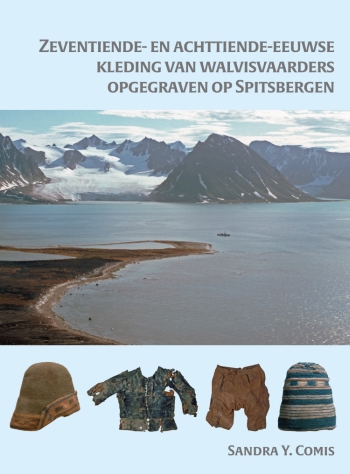Zeventiende- en achttiende-eeuwse kleding van walvisvaarders opgegraven op Spitsbergen

Excavated Seventeenth and Eighteenth Century whalers’ clothing from Spitsbergen
A series of archaeological excavations carried out by the Artic Centre of the University of Groningen between 1979-1981 uncovered the remains of a Dutch whaling station on Spitsbergen. Hundreds of textile fragments were found in and around the houses and the blubber furnaces, that were exploited from 1614 to around 1600. Amongst the finds were fragments of felt hats, jackets, breeches, stockings and mittens. The men evidently wore their normal winter clothing at work. The remains of textiles were also found in the graves of seven whalers who died during the overwintering attempt of 1634-1635.
In 1980, excavations were also conducted on the island Zeeuwse Uitkijk. Here the graves of 50 whalers were investigated. The graves contained a total of 33 knitted caps, one fur-brimmed leather cap, eight jackets and four pairs of breeches, either complete or in fragments, as well as several stockings. On the basis of the clothing styles some of the graves can be dated to the period between 1650 to around 1750. This forms the largest collection of workmen’s clothing from this period in Europe.
Amongst the finds there is nothing that can be regarded as typical whaler’s clothing. To protect themselves against the cold men simply wore several garments on top of one another. The only special purpose garment is the fragmentary pair of leather breeches, probably worn by the smith. The excavated garments are all of wool, as neither linen nor cotton is preserved under these conditions. The cut of the garments indicates that the everyday clothing worn on Spitsbergen followed contemporary fashion, albeit in a simpler and less costly form.
Dissertation: http://hdl.handle.net/(...)73-a056-d097f1ec8816
